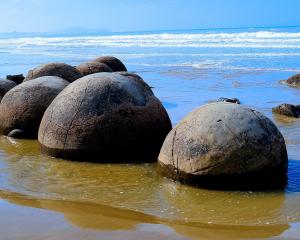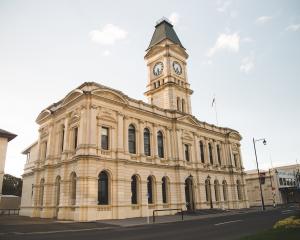A specific allocation of water for mahinga kai enhancement in the Waitaki catchment, sought by Ngai Tahu, could be a New Zealand first.
Ngai Tahu has asked for 11cumecs from the lower Waitaki River for mahinga kai enhancement as part of a change to the Waitaki catchment water allocation regional plan that came into force in 2006.
Ngai Tahu refers to the concept of mahinga kai as interests in food and other natural resources and the places where those resources are obtained.
In 2006, Ngai Tahu asked for an allocation for itself in the original plan and later at a resource consents hearing for Meridian Energy's proposed north bank tunnel hydro scheme.
It was declined because the Resource Management Act did not allow water to be allocated to individuals or groups of people, only activities.
This time, Ngai Tahu and its Moeraki, Waihao and Arowhenua runanga have asked for 11cumecs - 10cumecs for the lower Waitaki River and 1cumec to enhance Lake Wainono for the activity of enhancing mahinga kai. That amount could irrigate 20,000ha.
The request is being considered by an Environment Canterbury panel hearing evidence on the changes.
Experts at yesterday's hearing did not believe an allocation for mahinga kai enhancement had been made anywhere else in New Zealand.
Yesterday, the panel heard submissions and evidence from Ngai Tahu and its three runanga at the Waihao Marae in Morven.
Ngai Tahu counsel James Winchester said the allocation was not ''personal'' for Ngai Tahu or its runanga.
''...anyone would be able to seek a resource consent to use the allocation (not solely Ngai Tahu), so long as the proposed activity was for enhancing mahinga kai,'' he said.
However, anyone wanting to use any of the allocation would have to obtain from Ngai Tahu and the three runanga advice and an endorsement on whether it was enhancing mahinga kai.
In terms of defining mahinga kai, Mr Winchester said the concept went further than traditional or customary ways because it had evolved with the changing environment.
It could have ''commercial elements'' because full traditional-customary practices may no longer be appropriate.
Any uses of the allocation would still have to be assessed through resource consent applications on a case-by-case basis, he said.
Te Runanga o Moeraki representative David Higgins said some people had difficulty understanding what mahinga kai was. Some believed it was food gathering, but it was all the resources needed to sustain life.
Asked about the mahinga kai allocation being mixed with water in other catchments, Mr Higgins said water was ''already mixing all over the place''.
Views differed within Ngai Tahu on mixing waters but, in his view, ''the horse has already bolted''.
Mandy Waaka-Home outlined the significance of the Waitaki to all Ngai Tahu, including contemporary mahinga kai and aspirations for the future.
Mahinga kai practices had adapted over time as the environment had changed.
For example, artificial habitats - such as drains, canals, storage ponds and races - had become highly valued as substitute mahinga kai.
Some enhancement initiatives could include reinstating or creating wetlands, reintroducing or relocating species, species that could be farmed and substitute habitats created in artificial habitats.
Historically, and to a lesser extent now, trading of mahinga kai formed the basis of the Ngai Tahu economy. Trading eels for mutton birds was one example, even today.''
It is no longer appropriate to limit mahinga kai to traditional contexts,'' she said












